Charitable Trusts
Donors may provide gifts to Youth In Need through “living trusts.” There are no tax benefits until the actual transfer of the gift occurs. Based on the combination of number of beneficiaries, their ages, life expectancy or term of years and requested payout, the remainder value for Youth In Need must equal a minimum of fifty thousand dollars ($50,000). There are many different types of trusts including the Charitable Remainder Unitrust, the Charitable Remainder Annuity Trust and the Charitable Lead Trust.
Charitable Remainder Unitrust
The basic unitrust provides for payments either for life (or multiple lives) or for a term of years not exceeding 20, to the donor(s) and/or named beneficiaries in an amount equal to a fixed percentage of the market value of trust assets. The value of the trust asset is revalued annually. The payout percentage is fixed when the trust is created and, by law, may not be less than 5 percent. However, annual payments may increase or decrease from year to year, depending upon the value of the trust assets. Once set, the term of the trust is irrevocable.
For example, a donor can establish a trust and transfer stock worth $100,000 to it, retaining a five percent per year income stream for life (and/or another beneficiary). Upon the donor’s death (and/or the other beneficiary), the trust assets pass to Youth In Need.
Charitable Remainder Annuity Trust
The annuity trust differs from the unitrust in that the income payments to life beneficiaries are a fixed dollar amount for the life of the trust. The fixed “annuity payment” is established when the trust is created. It is based on a percentage of the assets as valued when they were transferred to the trust. By law, the minimum percentage payout cannot be less than 5 percent. Income earned by the trust in excess of the fixed dollar payment is added to the principal. Any shortfall shall cause the trustee to invade principal to make the fixed dollar payment. Only the assets in the trust back the fixed dollar payment to the beneficiary. YIN assets are not invaded. The donor may not add to the trust once the agreement is effective.
For example, a donor could transfer cash or stock worth $100,000 to a trust and direct that an income of $5,000 be paid annually to the donor and/or beneficiaries until their deaths. Upon the donor’s or beneficiaries death the assets are then transferred to Youth In Need.
Benefits of creating a trust include receiving an income stream and if the transferred stock was low yielding, the income stream may exceed the amount of dividend income that the donor has been receiving. The donor may also avoid capital gains taxes and can retain control over the trust investments as trustee or, if the donor prefers, someone else can serve as trustee. Income tax deduction would be calculated on an actuarial basis.
Charitable Lead Trust
The Charitable Lead Trust is almost the complete opposite of the Charitable Remainder Annuity Trust. With this type of trust, Youth In Need will receive the annual income for a specific number of years. Upon the expiration of the trust, the principal amount is then returned to the donor or the donor’s beneficiaries. This is like a “temporary” gift to Youth In Need that eventually returns to the family. This reduces estate taxes, while ultimately passing ownership back to the family.
For example, a donor can establish a $100,000 trust and direct Youth In Need to receive $5,000 per year for 10 years. The donor receives a charitable tax deduction for the $5,000 gift annually and at the end of the 10 years the trustee is directed to transfer all of the trusts assets back to the donor and/or his beneficiary.










